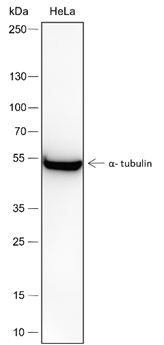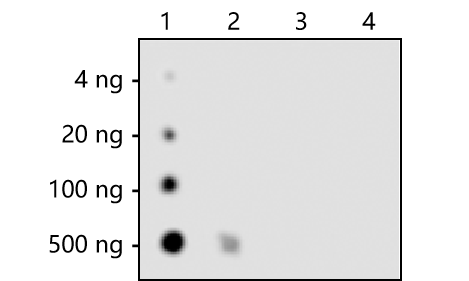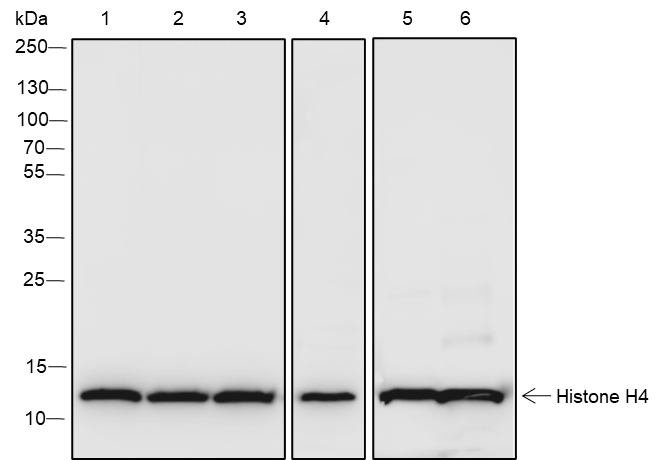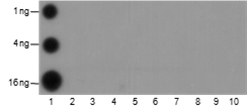
Clone Number: /
Host: Rabbit Clonality: Polyclonal
Applications: WB
Reactivity: Human, Mouse, Rat
Synonyms: H4K77ac
Shipping: Ambient temperature
Order online or send purchase order to info@ptmbio.com
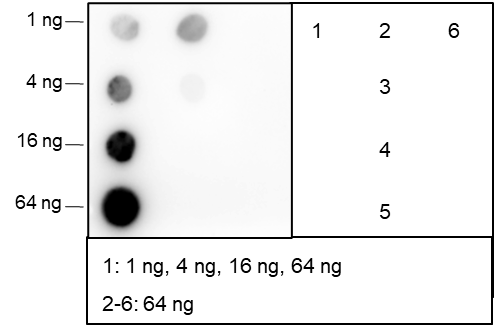
| Isotype | IgG |
| Conjugate | Unconjugated |
| Synonyms | H4K77ac |
| UniProt ID | |
| Immunogen | Acetylated human histone H4 (Lys77) peptide |
| MW (kDa) | 11 |
| Specificity | Anti-Acetyl-Histone H4 (Lys77) Rabbit pAb detects histone H4 only when it is acetylated at Lys77. This antibody has been shown to selectively recognize acetylated H4 peptide at Lys77, but not the structurally similar propionylated, succinylated, or 2-hydroxyisobutyrylated H4 peptides at Lys77 or Lys79. |
| Applications | Dilution | Recommended Species |
|---|---|---|
| WB | 1:500 - 1:2000 | Human, Mouse, Rat |
| Purity | Protein A and immunogen affinity purified |
| Constituents | PBS, Glycerol, BSA |
| Storage | Store at -20°C. Avoid freeze/thaw cycles. |
| Stability | Stable for 12 months from date of receipt/reconstitution. |
Background
Histone post-translational modifications (PTMs), known as the “histone code”, are key mechanisms of epigenetics that modulate chromatin structures. The PTMs on histone including acetylation, methylation, phosphorylation, and novel acylations directly affect the accessibility of chromatin to transcription factors and other epigenetic regulators, altering genome stability and gene transcription. Histone acetylation, tightly controlled by the opposing action of histone acetyltransferases (HATs) and histone deacetylases (HDACs), occurs primarily at lysine residues on the N-terminal tails of histones H2A (Lys5, 9, and 15), H2B (Lys5, 12, 15, 16, and 20), H3 (Lys4, 9, 14, 18, 23, 27, and 36), and H4 (Lys5, 8, 12, 16, and 20), and plays vital roles in the regulation of gene expression, DNA damage repair, and chromatin dynamics. Recent research has identified that H2BK120ac, H3.3K18ac, and H4K77ac are significantly associated with the survival of hepatocellular carcinoma (HCC) patients. Furthermore, H4K77ac has been linked to HCC recurrence. These findings suggest that H2BK120ac, H3.3K18ac, and H4K77ac may be potential prognostic factors for HCC.
Cellular location
Nucleus
| Dot Blot | |
|---|---|

|
Peptide amount: 1 ng, 4 ng, 16 ng |
| WB | |
|---|---|
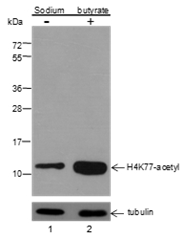
|
Lysates: (-) HeLa cells; (+) HeLa cells treated with 30 mM sodium butyrate for 4 hours |
Research Use
For research use only, not for use in diagnostic procedures.
